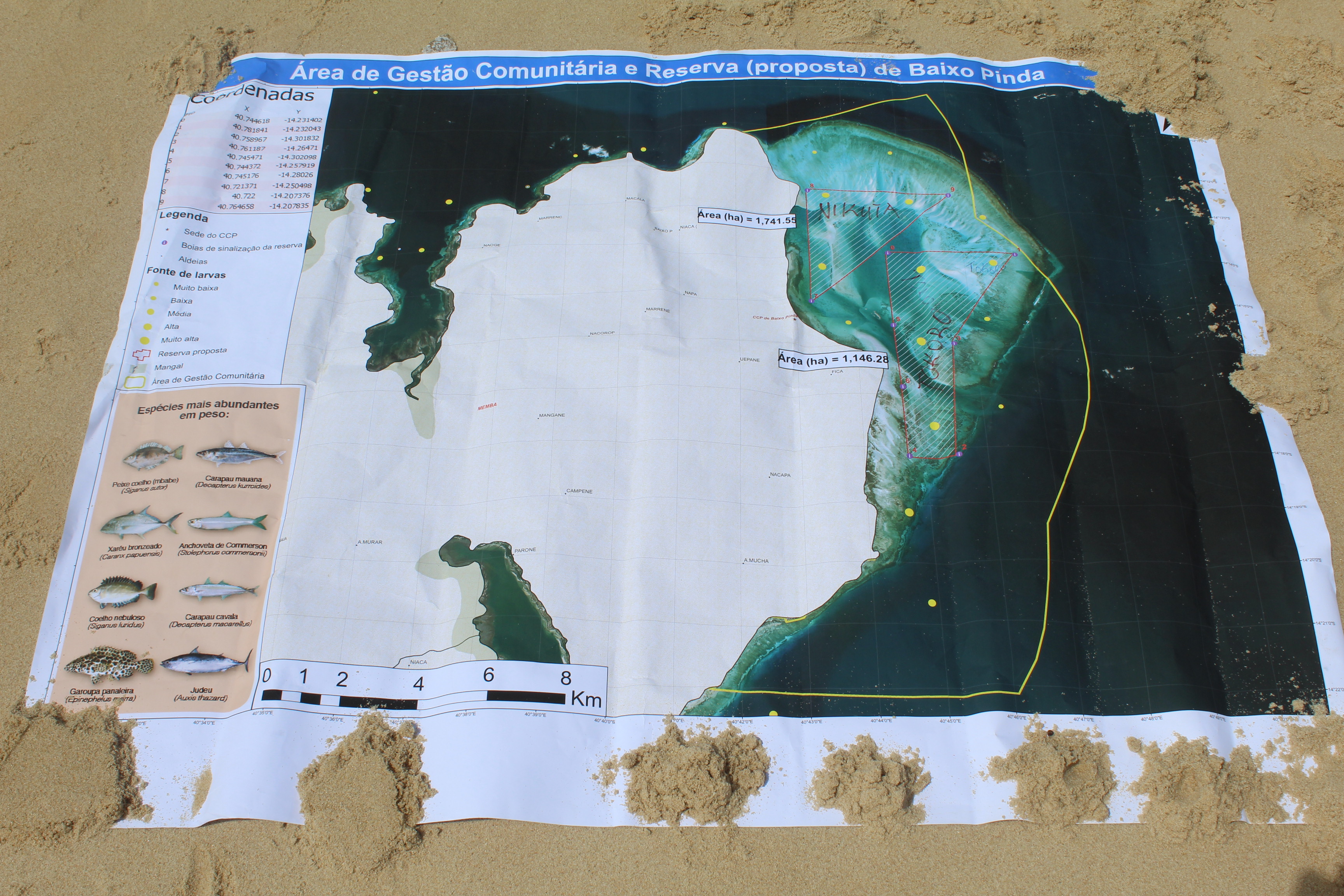

Community-Managed Access and Reserve (CMA+R) areas are a spatial fisheries co-management tool in which communities and governments work together to identify locations for restricted fishing. Managed Access areas allow communities to set rules and restrictions on fishing, such as disallowing destructive gear, establishing seasonal fishing bans, or limiting the number of fishers allowed to fish in the area; and they enable communities to participate the surveillance and enforcement of these rules. Reserve areas are no-take zones where fishing communities agree to never fish, thereby protecting critical habitats and allowing fish stocks to recovery. The two types of protected area work together, allowing communities to sustainably fish from CMA areas adjacent to Reserves whose ecological integrity feed the fishery. “Networks” of multiple CMA+R areas across a coastline have the same positive feedback effect over a wider geography.
CMA+R areas must be legitimized through legal mechanisms that explicitly make this approach enforceable. Functional and formally recognized community management bodies must exist, and they must have institutional capacity to manage fisheries. Finally, both community management bodies and government partners must have access to accurate fisheries data that allows them to make appropriate decisions based on a clear understanding of the number of fishers, the amount of fish being caught, the income fishers are earning, and changes in these trends.
CMA+R design is a complex process, and must take into account ecological, social, and economic impact of fishing restrictions. Rare has found that using a larval dispersal model helps to determine the most ecologically advantageous areas for CMA+R designation, because larval dispersal shows those habitats where young fish are most likely to recruit, grow, and thereby replenish fisheries stocks. However, only repeated community consultation and extensive household surveys can reveal the social and economic concerns involved in CMA+R design, as well as the local ecological knowledge that larval models may overlook. Robust community participation is absolutely essential to establishing effective boundaries that people can and will support. For this reason, steady and intentional community engagement efforts are crucial to the successful design and implementation of CMA+R.